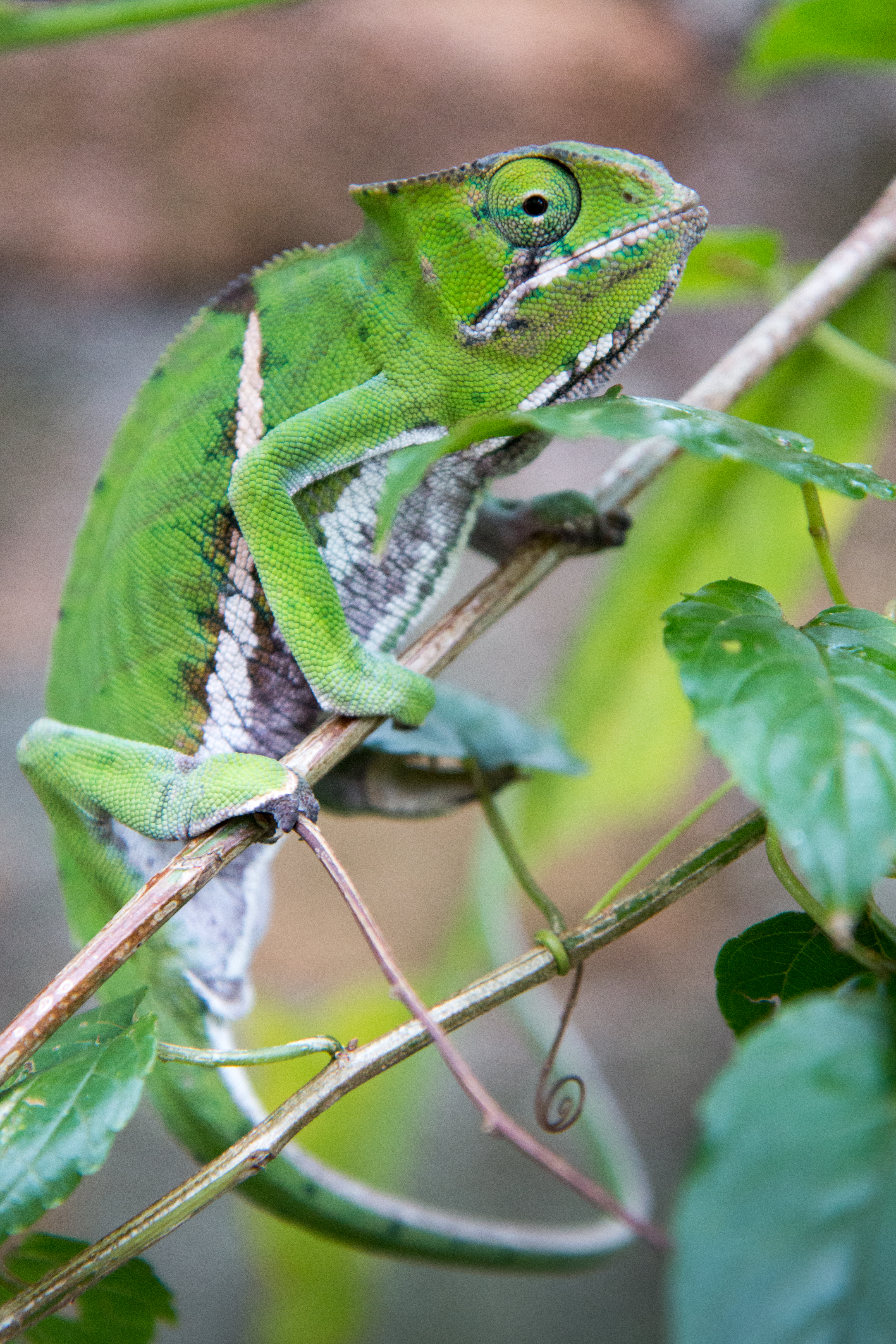Furcifer Balteatus on:
[Wikipedia]
[Google]
[Amazon]
''Furcifer balteatus'', also known as the two-banded chameleon or the rainforest chameleon, is a species of
 ''Furcifer balteatus'' is
''Furcifer balteatus'' is
chameleon
Chameleons or chamaeleons (family Chamaeleonidae) are a distinctive and highly specialized clade of Old World lizards with 202 species described as of June 2015. The members of this family are best known for their distinct range of colors, bein ...
that is endemic
Endemism is the state of a species being found in a single defined geographic location, such as an island, state, nation, country or other defined zone; organisms that are indigenous to a place are not endemic to it if they are also found elsew ...
to Madagascar. It was described by André Marie Constant Duméril
André Marie Constant Duméril (1 January 1774 – 14 August 1860) was a French zoologist. He was professor of anatomy at the Muséum national d'histoire naturelle from 1801 to 1812, when he became professor of herpetology and ichthyology. His ...
and Gabriel Bibron
Gabriel Bibron (20 October 1805 – 27 March 1848) was a French zoologist and herpetologist. He was born in Paris. The son of an employee of the Museum national d'histoire naturelle, he had a good foundation in natural history and was hir ...
in 1851.
Distribution and habitat
 ''Furcifer balteatus'' is
''Furcifer balteatus'' is endemic
Endemism is the state of a species being found in a single defined geographic location, such as an island, state, nation, country or other defined zone; organisms that are indigenous to a place are not endemic to it if they are also found elsew ...
to southeast Madagascar
Madagascar (; mg, Madagasikara, ), officially the Republic of Madagascar ( mg, Repoblikan'i Madagasikara, links=no, ; french: République de Madagascar), is an island country in the Indian Ocean, approximately off the coast of East Africa ...
. It can be found in Ranomafana where the average temperature is between and the rainfall is roughly per annum. It has been found over an estimated area of but has a "patchy distribution" and is believed by the International Union for Conservation of Nature
The International Union for Conservation of Nature (IUCN; officially International Union for Conservation of Nature and Natural Resources) is an international organization working in the field of nature conservation and sustainable use of natu ...
to be decreasing in population. Most sightings were at a height of above sea level but some were at lower altitudes. It is a rare species and most of the sightings were of single individuals. Some surveys have failed to locate any individuals and it is ranked as an Endangered species
An endangered species is a species that is very likely to become extinct in the near future, either worldwide or in a particular political jurisdiction. Endangered species may be at risk due to factors such as habitat loss, poaching and inv ...
by the IUCN. The major threat to this species is degradation of its forest habitat. It is a CITES
CITES (shorter name for the Convention on International Trade in Endangered Species of Wild Fauna and Flora, also known as the Washington Convention) is a multilateral treaty to protect endangered plants and animals from the threats of interna ...
-listed species and export from Madagascar has been banned since 1994. Nevertheless, it is believed to be highly desirable to the pet trade and illegal exports are a threat.
Description
Though basically green, ''Furcifer balteatus'' is variable in colour and is well camouflaged in its arboreal surroundings. It often has darker green diagonal stripes with paler bands between and usually has a characteristic buff-coloured diagonal streak. The body length can be as much as and the tail as least as long again. The males have a pair of horny projections long on their heads. It is commonly known as the two-banded chameleon or the rainforest chameleon.Taxonomy
The species was initially described in Duméril & Duméril 1851: 32 by Duméril and Bibron. It was described as the ''Dicranosaura bifurca var. crassicornis'' by Gray in 1865, and then as ''Chamaeleon balteatus'' in 1865: 347 by the same person. It was next described by Angel in 1942 as ''Chamaeleo balteus''. Werner in 1911: 27 later described it under ''Chamaeleon bifidus'', and then it was described as ''Chamaeleo bifidus'' fifty-five years later in Mertens 1966. Brygoo and Domergue described it as ''Chamaeleo balteatus'' in 1969, and then Brygoo described it under the same name in 1971 and 1978. In 1986, it became known as the ''Furcifer balteatus''. Klaver and Böhme described it as this in 1986, and it was later described under the same name by Glaw and Vences in 1994. ''Furcifer balteatus'' was most recently described by Necas in 1999 as ''Furcifer balteatus''.References
{{Taxonbar, from=Q2087128 Furciferchameleon
Chameleons or chamaeleons (family Chamaeleonidae) are a distinctive and highly specialized clade of Old World lizards with 202 species described as of June 2015. The members of this family are best known for their distinct range of colors, bein ...
chameleon
Chameleons or chamaeleons (family Chamaeleonidae) are a distinctive and highly specialized clade of Old World lizards with 202 species described as of June 2015. The members of this family are best known for their distinct range of colors, bein ...
Endangered fauna of Africa
Reptiles described in 1851
Taxa named by André Marie Constant Duméril
Taxa named by Gabriel Bibron
Fauna of the Madagascar subhumid forests